
Food / Products
Eat and Touch
Lake Towada is located on the border between Aomori and Akita. There is food culture born in the natural features of both region. Also local products were born and grew up in this regional climate, have taken root in life of this area.
Seafood
-
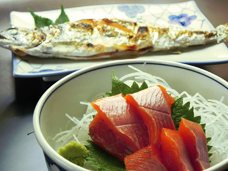
Red Salmon(Himemasu)
Himemas, which represents Lake Towada, is a freshwater fish from the Salmonidae family that can’t get to the sea and spends most of its life in the lake.
It is small enough to be named “Hime(princess)” and has a beautiful silver and a bright orange body.
Raw fish is the most delicious because it lives in a beautiful lake. It is sweet and has a rich texture, and there are plenty of ways to eat raw fish such as sashimi, carpaccio, and sushi. You can also enjoy grilled salt, fried or tempura.
Most guesthouses and restaurants offer a menu that is carefully devised. -
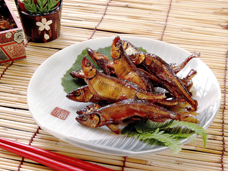
Smelt
The smelt that grew up in Lake Towada, where the water is beautiful, is pale and has a good taste.
When you come to Lake Towada, you should definitely try the freshly-boiled smelt. Rice goes well with it, and it has a rich, sweet and spicy seasoning and a soft texture.
You can eat it whole. You don’t have to worry about the head, internal organs, or bones.
Living
of the Land
-
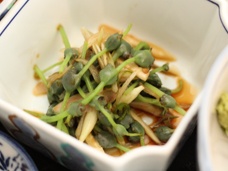
Mountain Vegetables
Naturally rich Lake Towada offers seasonal vegetables. In the spring after the cold winter, the new shoots, the blessings of the mountains such as Udo, Japanese cypress, and bracken will be revealed. You can pick a lot of mushrooms such as Maitake, Nameko, and Mukitake in the fall.
There are inns, etc. that cook freshly picked wild plants, and you can taste all four seasons. -
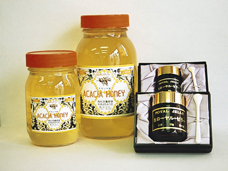
Acacia Honey
In Kosaka town, Akita Prefecture, where Lake Towada is located, along the Towada Lake Jukai Line is one of Japan’s leading Acacia belts, where white flowers of Acacia bloom together in June. The honey that can be picked up here is characterized by a clean aftertaste and a clear, transparent color. There is no strong taste, it is familiar with its light aroma and soft sweetness, and it is ideal for cooking.
-
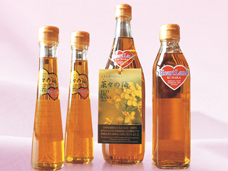
Rape Blossoms
Domestic rapeseed is 100% squeezed from traditional squeezing methods to make use of its original taste.
The field of rape blossoms here has been dyed in the brilliant yellow of rape blossoms since mid-May, and tourists visit every year with the aim of viewing rape fields.
The field of rape blossoms uses “Kizaki no rape” that has not been genetically modified, and traditional Japanese rapeseed contains a lot of unsaturated fatty acids called erucic acid, and taking too much can lead to heart disease. As a result of variety improvement, it is sold as a high-quality edible oil that contains almost no erucic acid.
The dishes take full advantage of the original rapeseed taste and allow you to enjoy a deep and mild taste. -
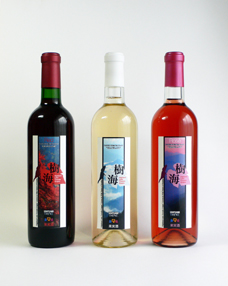
Fruit Liquor
A mountain town that has flourished from mines since long ago, Kosaka Town. This town with Lake Towada makes use of the cool land to produce precious mountain grape hybrids. The name of” Jukai ” It is named after the sightseeing road “Jukai Line” that leads to Lake Towada.
The types are red, white, and rose, and the taste is dry to slightly dry. It is a wine that is enjoyed in the whole region,inheriting the vivid hues of mountain grapes and the deep and unique aroma.
Traditional
Food
-
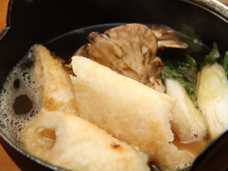
Kiritanpo
The food baked by wrapping the rice on a cedar stick is called” Tanpo “and is especially popular in Akita Prefecture. It is common to remove the ricr from the stick, cut it into a small size to eat, and call it “Kiritanpo”.
Grilled Kiritanpo is eaten with miso in pots. At Lake Towada, you can enjoy Kiritanpo pot with Akita’s local chicken, Hinai chicken. -
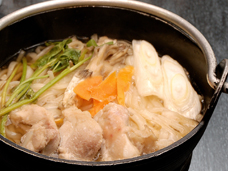
Inaniwa Udon
Inaniwa Udon is one of Japan’s 3 largest udon. Dried udon with a hand-rolled manufacturing method in the southern part of Akita Prefecture is characterized by a flat shape. Due to the bubbles in the noodles, the texture is smooth and throaty.Although it is from the southern part of Akita, you can also enjoy Inaniwa Udon at Lake Towada on the border between Aomori and Akita.
-
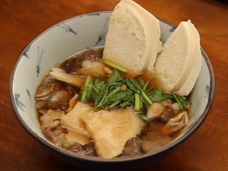
Cracker Soup
Senbei(Cracker) soup is popular in the southern part of Aomori Prefecture, mainly in Hachinohe City.
The southern part has long been devastated by the eastern wind called “Yamase” in the season when rice grows.
For this reason, wheat crackers instead of rice, have been developed, and it originated from a half-baked cracker.
Rice crackers cooked in soy sauce-flavored soup (chicken or salmon, etc.) change to a soft texture that includes soup. It is one of the menus that are appreciated by tourists, especially during the cold season, as it warms the body up. Recently, it was designated as a Class B gourmet. -
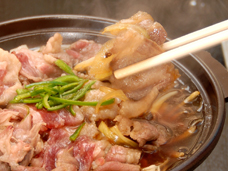
Towada Barayaki(sauteed beef and onion)
Popular as a Class B gourmet. This is a dish in which beef and a large amount of onions are fried on an iron plate in a soy sauce-based sweet and spicy sauce. This simple dish becomes addictive once you eat it, and it’s perfect for either side dishes or with beer. The seasoning is slightly different at each store, and it may be fun to compare each one.
Local Products
and
Recommended
Souvenirs
-
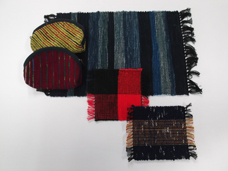
Rag Weaving
Sakiori, a traditional craft from the Tohoku region. It is a craft made by tearing worn kimonos and weaving them into yarn.
In Tohoku, silk did not grow because of the cold, and clothing was very valuable. Reusing worn fibers was the wisdom of an old man who had been forced to save and was also a item to keep warm.
The weaving cloth is colorful and shows the individuality of the weaving person. You can’t change the pattern of weaving, and you can’t make the same design as anorther person, so it is difficult to find a particular pattern or color. -
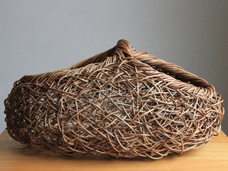
Akebia Craft
Akebia crafts are made mainly in the Tsugaru region of Aomori and Akita Prefecture. It is a craft made by literally knitting Akebia vine. Various daily necessities are made, but baskets are the most common. The warmth is transmitted the moment you pick it up, and the vine shape is used for knitting, so you can feel the bounty of nature as it is. It is very strong, and once used, it seems to become a fan with its ease of use and elegant shape. It is a craft with a special feeling that makes you want to give it to someone special.
